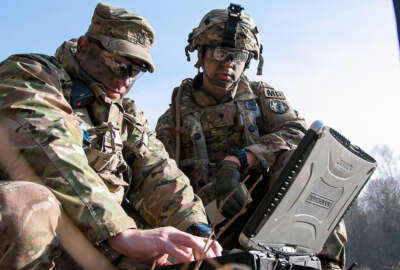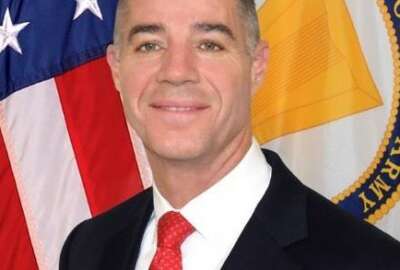
Army’s Rapid Capabilities Office emulating industry advancement of AI
The Army's Rapid Capabilities Office is looking for ways to apply AI and machine learning to signal classification.
Just over a year into it’s existence, the Army’s Rapid Capabilities Office has already logged a few big wins, especially in the electronic warfare domain, including delivering new capabilities to soldiers in Europe.
Their next big target is artificial intelligence.
Rob Monto, director of the Emerging Technologies Office at the RCO, said during a May 18 Washington Technology Power Breakfast that the office released a broad agency announcement (BAA) on the subject. They’re looking for ways to apply AI and machine learning to signal classification. Specifically, the goal is to “reduce cognitive burden on electronic warfare personnel by providing a machine learning capability to identify and classify signals of interest in a dense electromagnetic environment,” according to Monto’s presentation slide.
The office wanted to try to mimic the way industry has been working to advance AI, so it created a challenge, and released test data sets for industry to work with.
“As of April 30, we released this challenge,” Monto said. “We currently have over 160 teams that are participating in this challenge. So right there, we’re able to put out a training set, synthesize data that folks are able to understand and decompose what the data science is behind it, and start building algorithms. And the goal is to get algorithms back that potentially would have really good signal classification capabilities to it.”
The top three winners of the challenge will get a prize. Monto said this will basically be the competitive portion of an Other Transaction Agreement (OTA). Some form of integration effort would follow.
“It was a different way of looking at the problem, instead of just putting an RFI out,” he said. “We did that eight months ago, and you get whitepapers back, and you don’t know how well they’re really performing. So this is a way for us to really gauge that, get the community energized, as well as provide some incentive for them to actually fill into this space.”
Monto said RCO is largely focusing on near-peer strategic threats, and his office is specifically looking at technologies expected to emerge and be relevant within the next five years.
RCO recently logged another big win with alternative position, navigation and timing technology.
“One of the first experiments that we did was alternative position, navigation and timing,” Monto said. “We had a project, Project Titan. They were marching a long path on integrating some capabilities that they had identified within industry to help accelerate and bring in to help operational needs within the Army, especially in Europe. One of the areas that our leadership said was ‘go out and look at different technologies that might be completely alternative to GPS.'”
So the RCO partnered with U.S. Special Operations Command on one of their technical training events. A training site in Indiana provided them with multiple environments, ranging from buildings to forests, long range to subterranean. The experimented with various different signals than GPS, including some RF ranging.
Then they put it out on SOCOM’s BAA, because RCO didn’t have its own yet. Because they were able to experiment and demonstrate in an operations context, they could provide both technical and user experience feedback. In this way, RCO was able to identify a few technologies it wants to explore.
That’s not to say there haven’t been challenges. RCO is still part of a bureaucracy, and moving any new technologies through the testing process can be time-consuming. The key, Monto said, is the need to be accepting on risk. He also advocated pushing back, within reason.
“A little healthy irreverence sometimes is key,” he said. “Ask why when people are saying no — why can’t we get to yes?”
Copyright © 2025 Federal News Network. All rights reserved. This website is not intended for users located within the European Economic Area.
Daisy Thornton is Federal News Network’s digital managing editor. In addition to her editing responsibilities, she covers federal management, workforce and technology issues. She is also the commentary editor; email her your letters to the editor and pitches for contributed bylines.
Follow @dthorntonWFED





